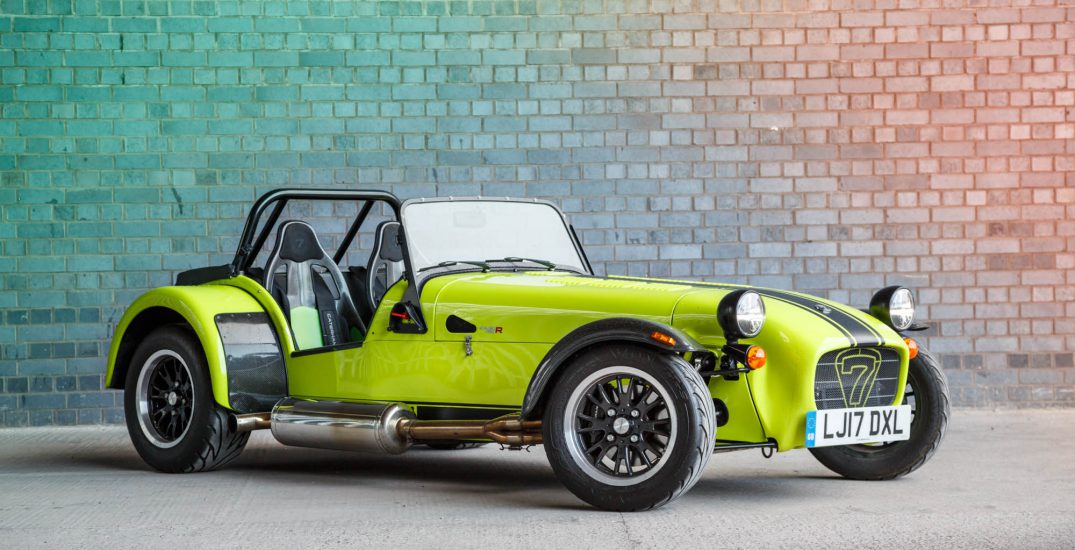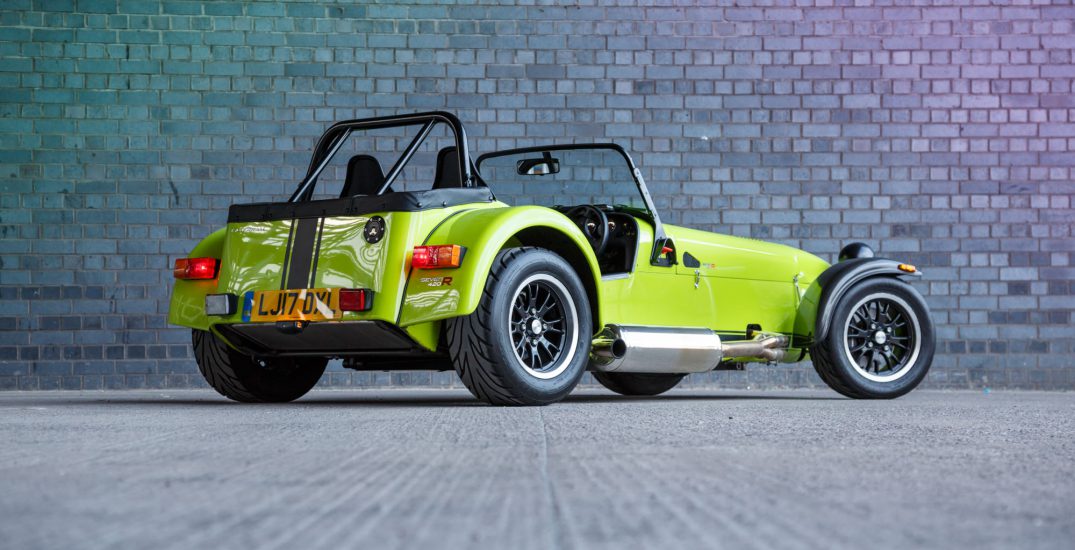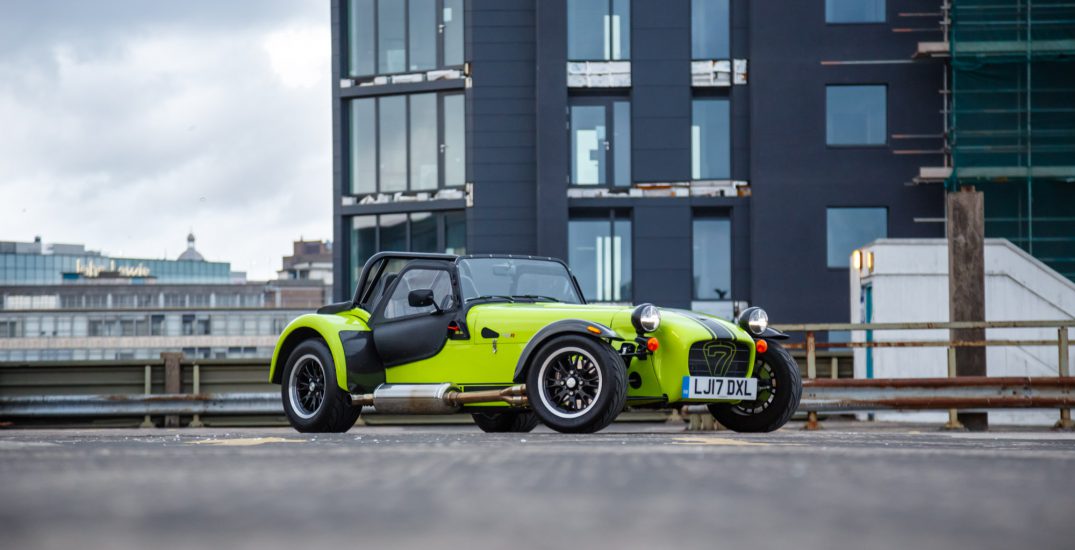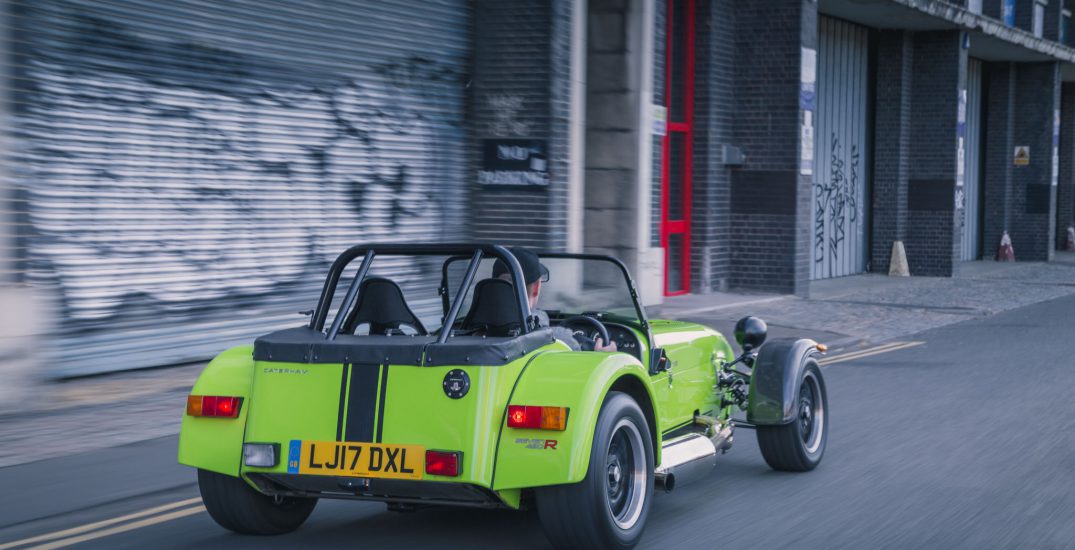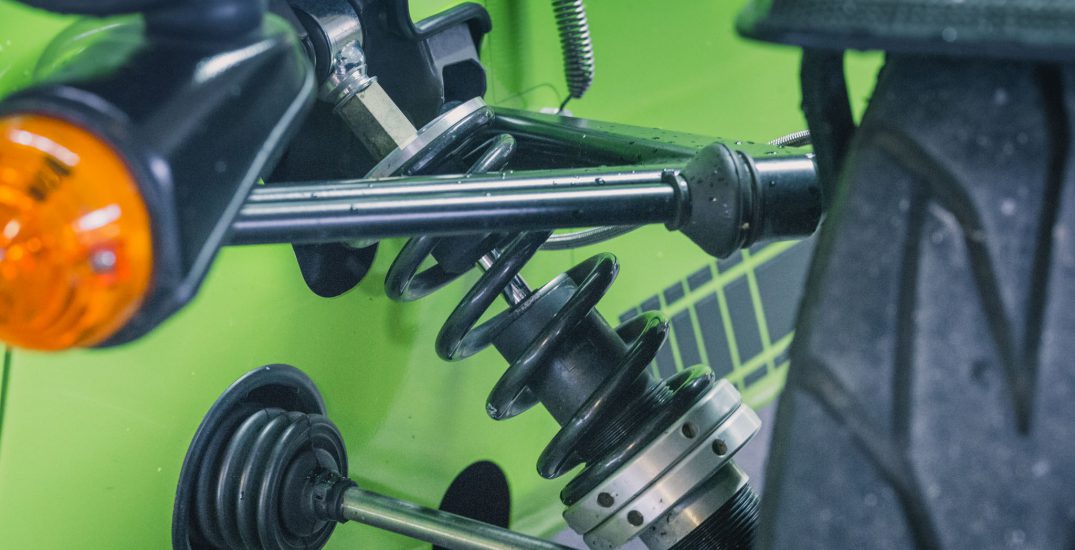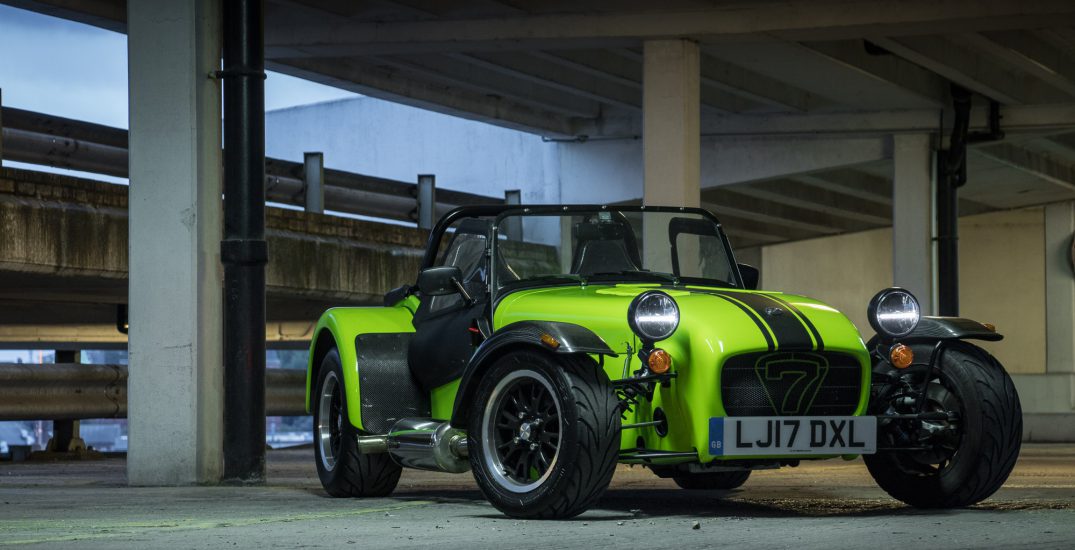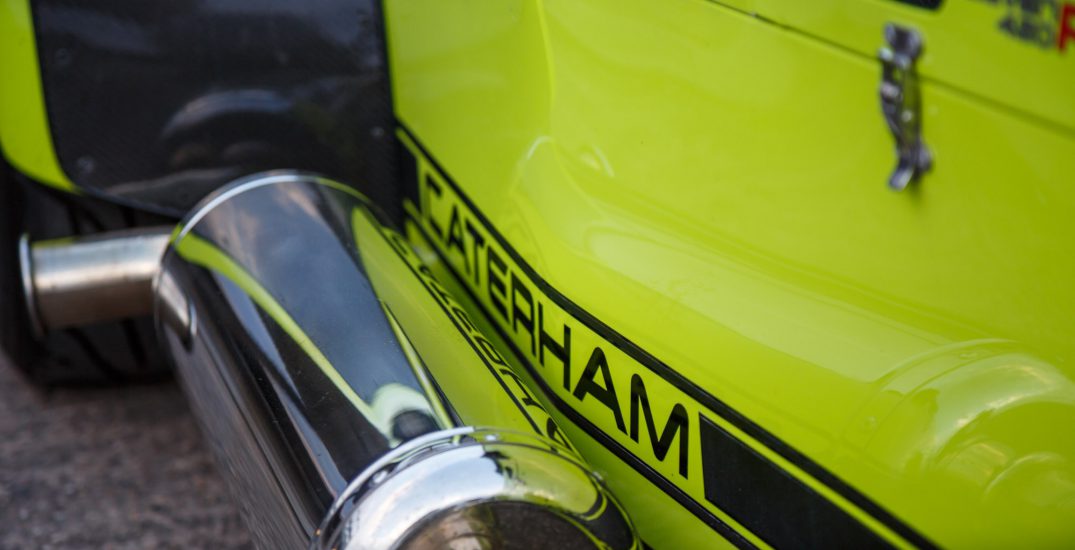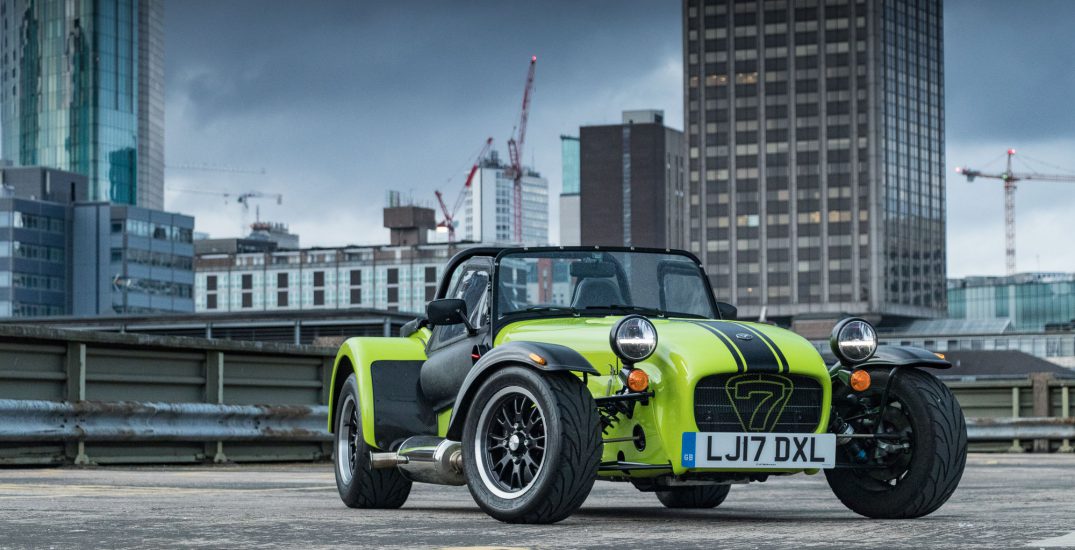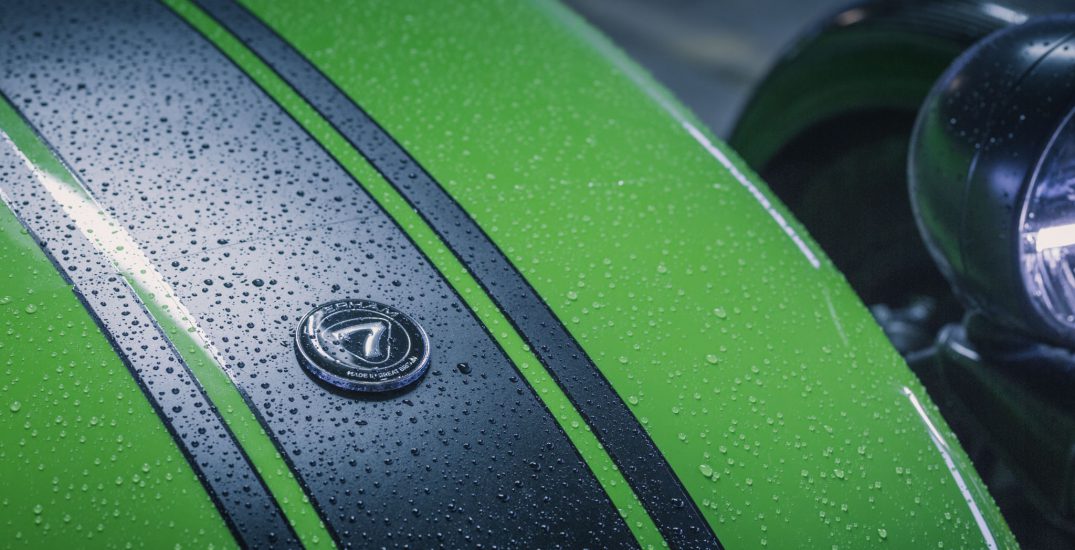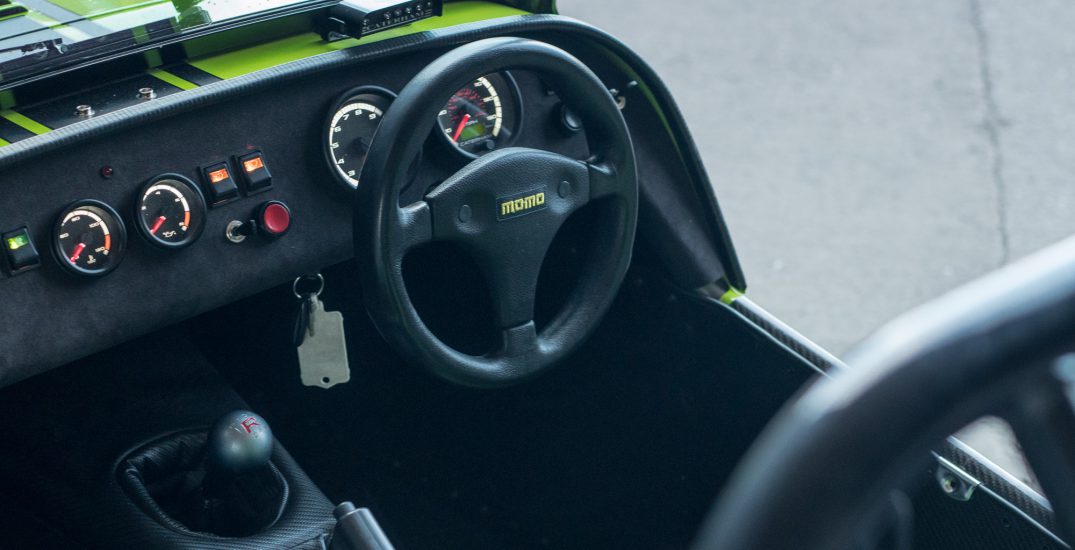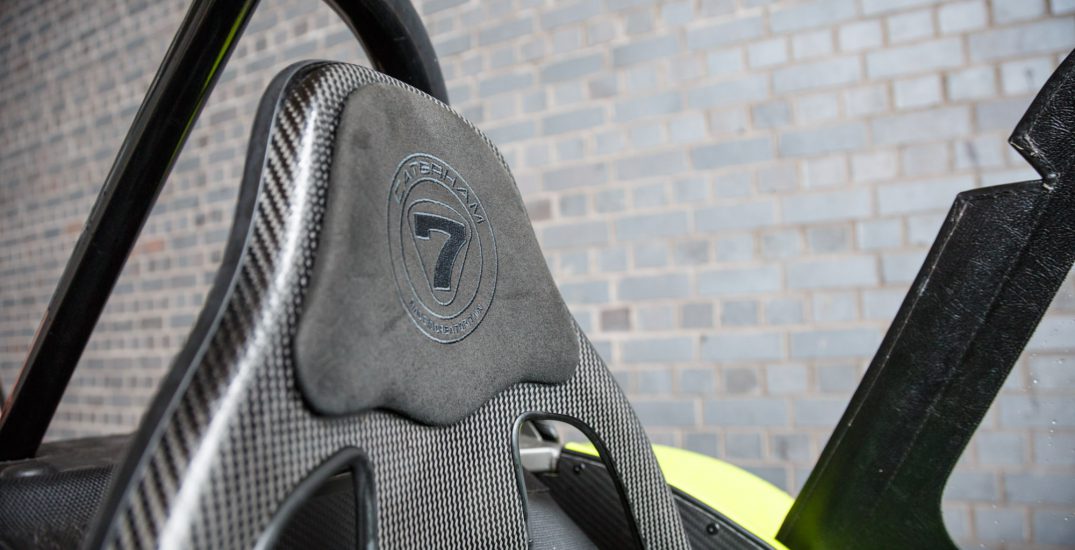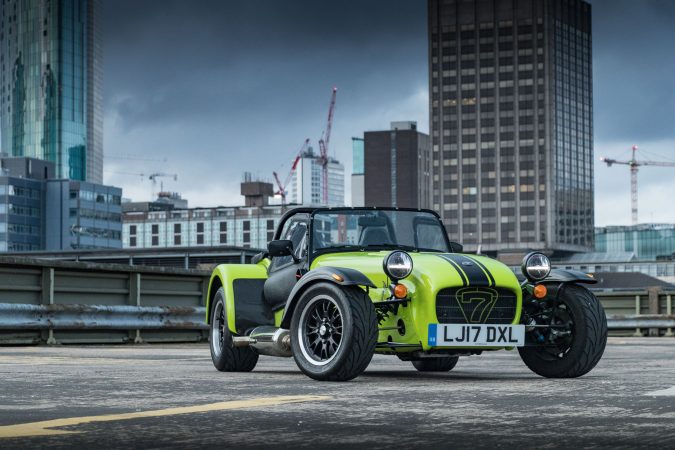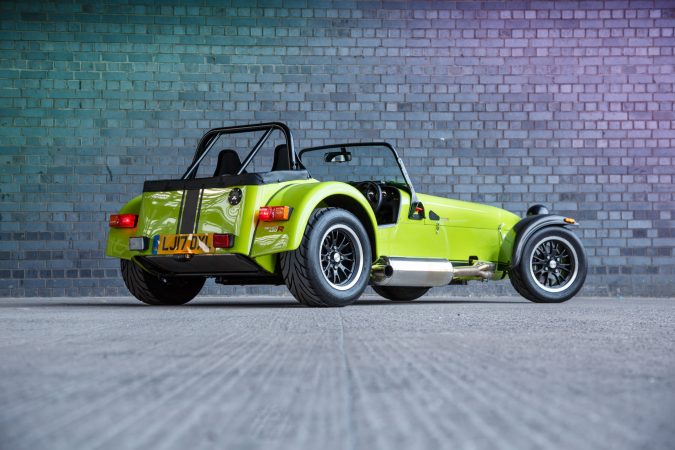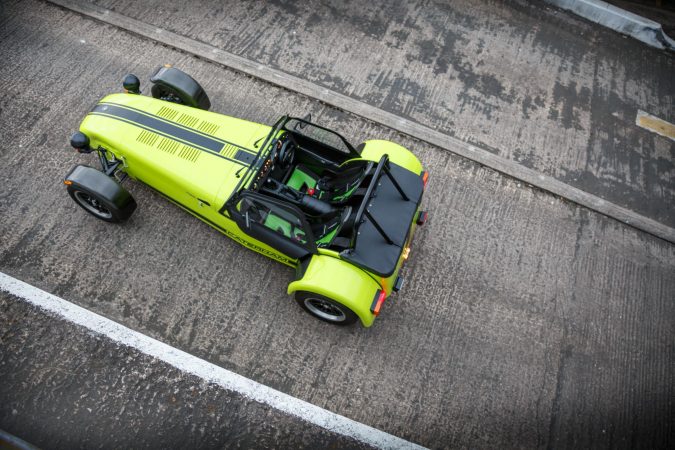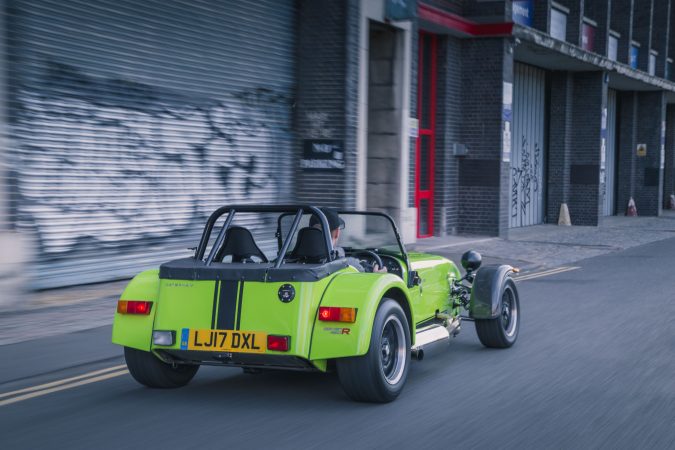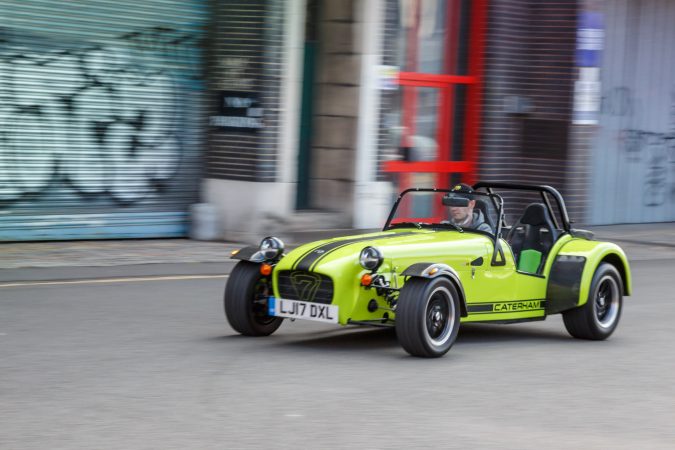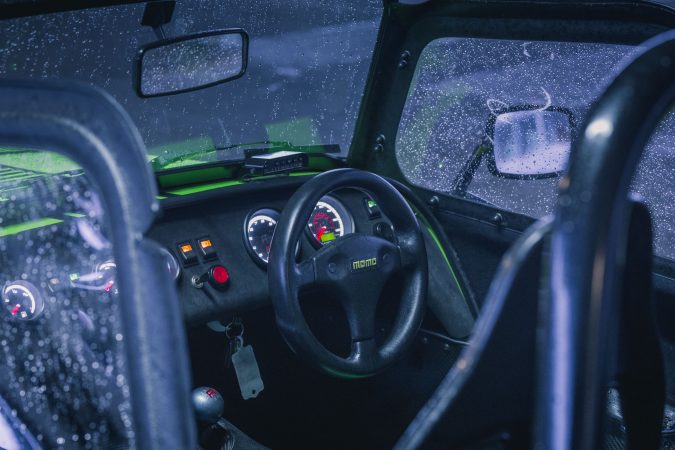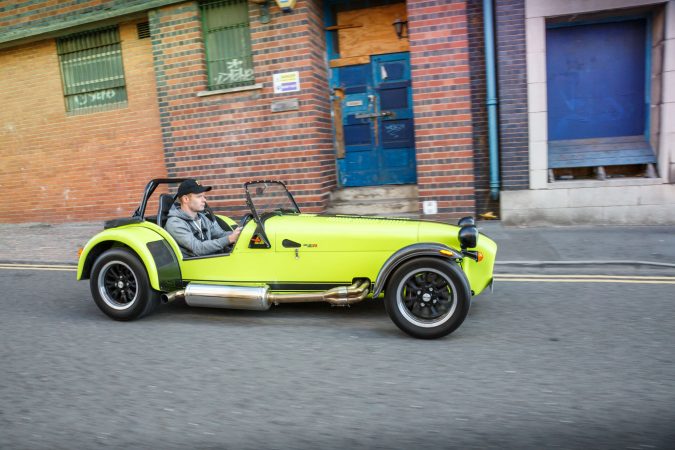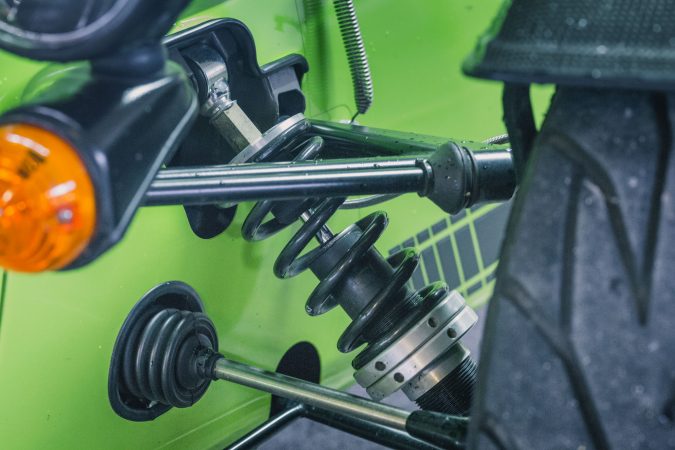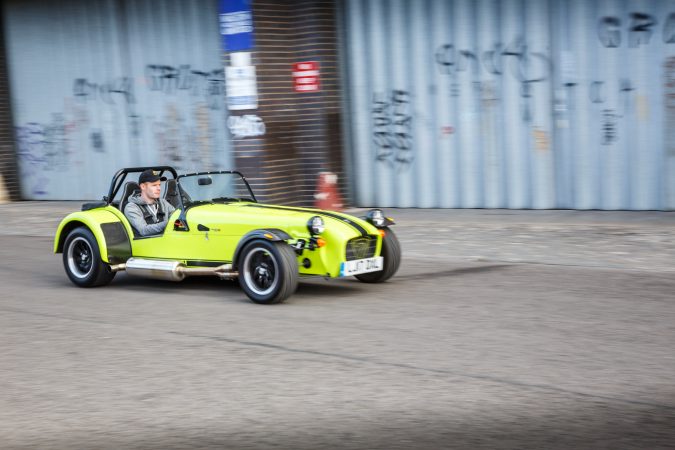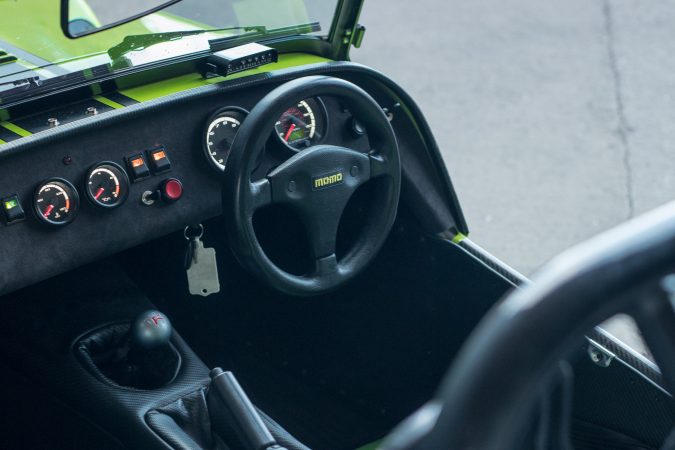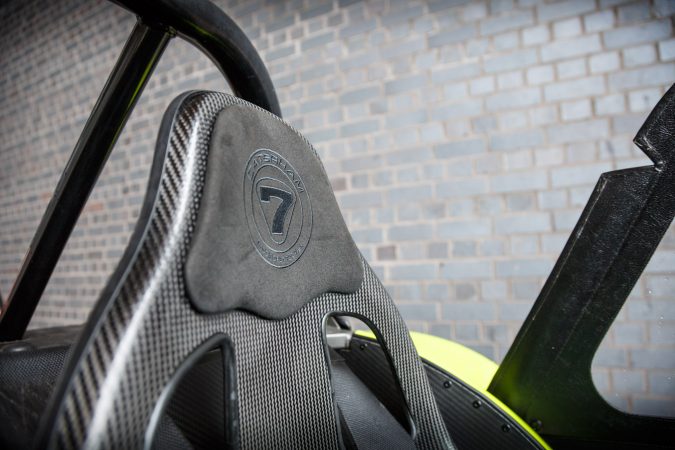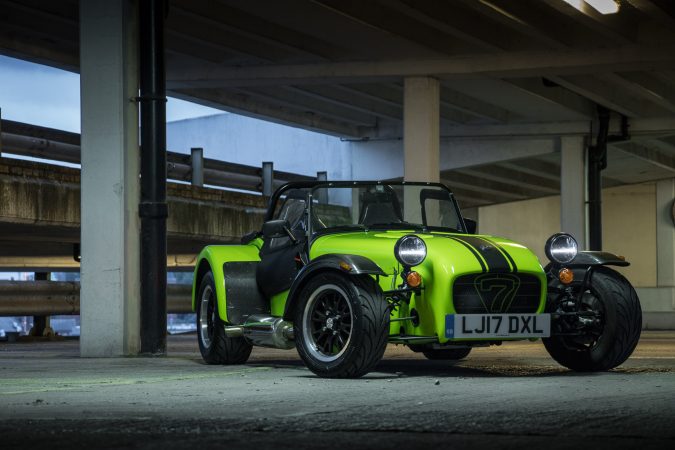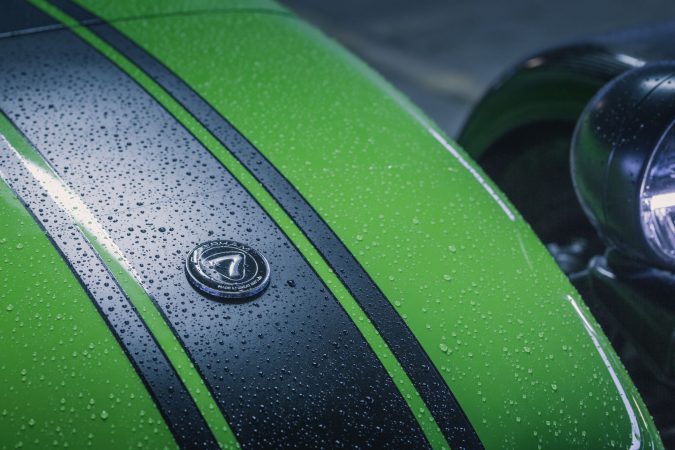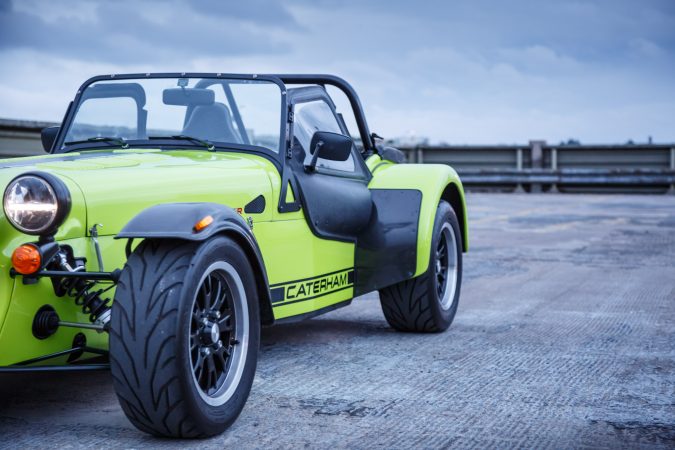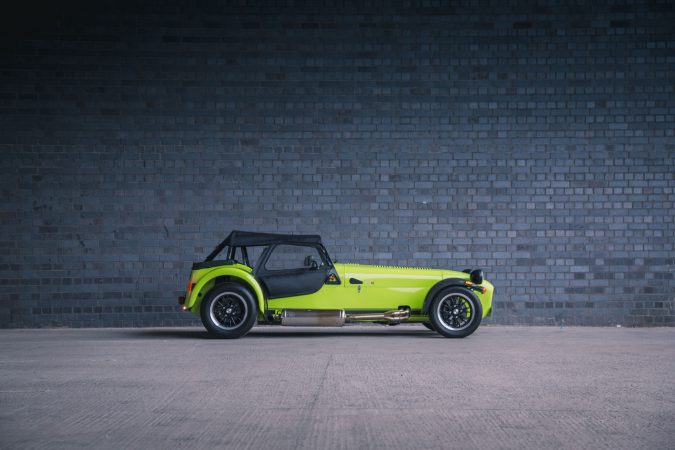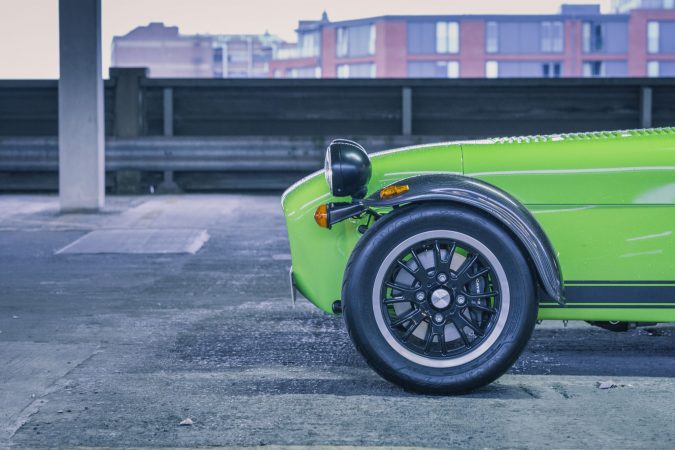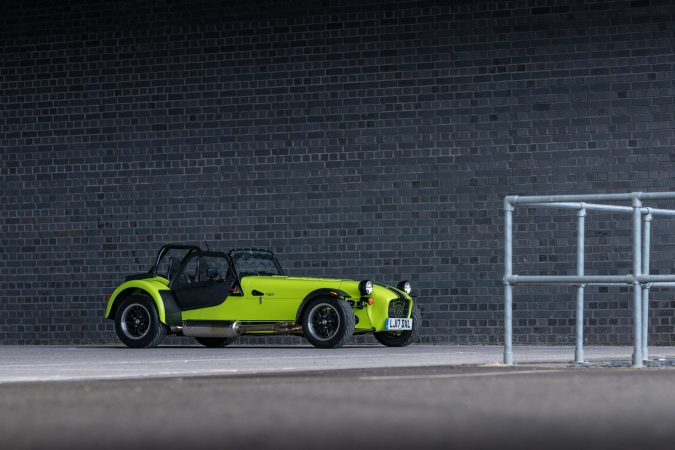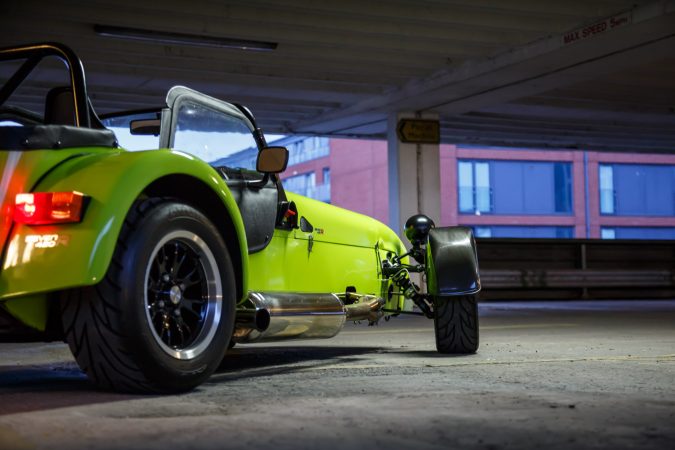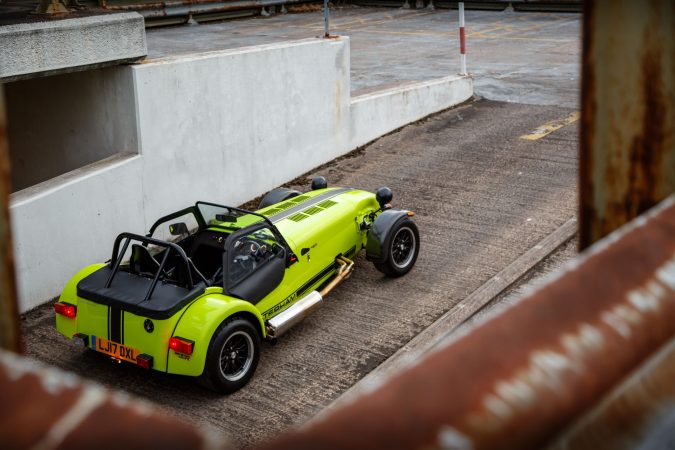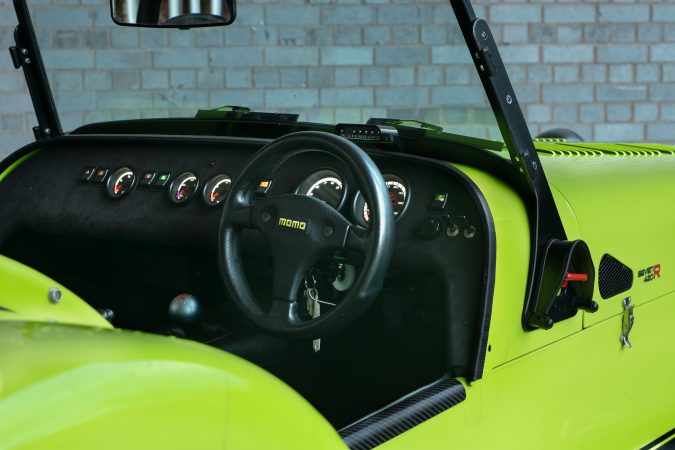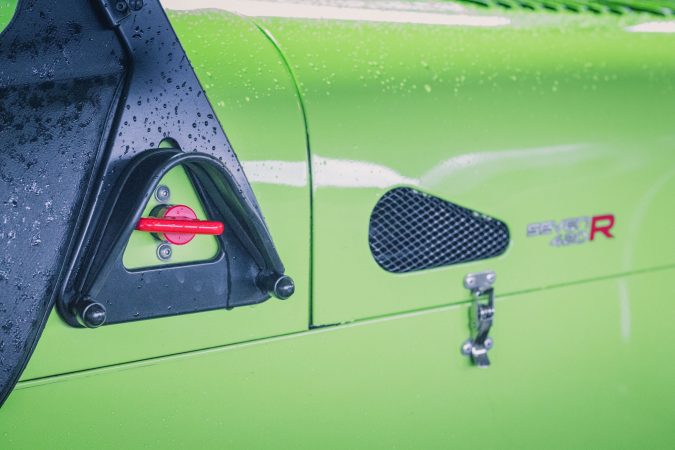Caterham Seven 420R
We got behind the wheel of the Caterham Seven 420R to find out just what it’s like living with this track-ready car on the roads in the summer.
What is the Caterham Seven 420R all About?
Here we are testing the latest Caterham Seven 420R. The numbers stand for (roughly) the amount of bhp-per-ton, and each model only weighs around 560 kg. You are able to purchase most of these cars in S or R packs. Here we have the R Pack fitted at the cost of £4,495 which adds a lot of extras for the track-focused driver. These include a limited-slip differential, a lightweight flywheel, a Momo steering wheel, 4-point race harnesses and importantly an uprated brake master cylinder. Other options fitted to the car are the track suspension pack and Appolo alloy wheels with Avon ZZS tyres.
The Caterham Seven 420R is built from the ground up to be a super lightweight car, and contains no equipment that isn’t essential for driving. So you get no air conditioning, car radio or even a clock.
The 420R is currently the most powerful naturally-aspirated Caterham using a 2.0-litre engine. It creates 210 bhp and 203 Nm of torque. The power goes to the rear wheels using a 6-speed manual gearbox. This makes the 0-62 mph time around 3.8 seconds, topping out at 136 mph. The power per tonne translates to 375 bhp-per-tonne. On paper, these figures sound impressive, but they don’t give a real idea of the performance, as it feels much faster in real life.
How Does it Drive?
Whereas with most vehicles, you can get in and drive off in seconds, the Seven takes a little longer to get moving. With our test model here, I needed to insert the red electric kill switch on the side, remove the steering wheel, prepare the harness so I didn’t sit on the straps, get in, do up the harness, put the steering wheel back on, put the key in the ignition, disable the immobiliser and then hit the start button. All of this takes time. But it’s worth it as this is no average vehicle, it is a beautiful race car.
Once you get moving, the first thing you will notice is how lightweight the Caterham Seven 420R is. Whatever gear you are in, it accelerates rapidly. At first, I put extra time and effort into finding out how the car acts, before opening it up. The driving experience is so raw that everything is communicated through the steering wheel, pedals and chair. In fact, you can actually see your front two wheels, so you get visual feedback too. It took me a day or two to get a feel for the car’s grip levels and to drive as enthusiastically as expected for this type of vehicle.
When behind the wheel and driving spiritedly, there was lots to enjoy. The first time I opened the vehicle up for some off the line acceleration, it was extraordinary. So much so that the memory has seared itself into my brain. From a standing start, the car rushed forward with lightning speed and a beautiful engine note. All I could think was, “This isn’t even the fastest version!”. Remember Caterham also offer a 620R that has an addition 100bhp compared to this model.
When you start to reach the top of the rev range, the vehicle has a sequential shift light system. This clearly identifies the best point to move up to the next gear, without having to take your eyes off the road. When you grab that next gear, the clutch and gear stick movement is perfectly executed. In your head, you will really believe that you can see all the mechanics moving because of the sensations you can feel from these controls.
The gears in the Caterham Seven 420R feel like they are in close ratio, but they each rev up to around 7,600 rpm, so serious speeds can be achieved even in the lower gears. When accelerating, you feel like you are ripping through the gears and it is such a pleasurable experience. You sit in the car with the exhaust system just to your right, so it’s almost aligned with your ear. The sound is incredibly loud at high rpm and the little rasps that you get when shifting gears are a treat to behold.
Handling is what Caterham Sevens are most famous for. With the huge focus on optimising the vehicles for lightness, this makes smooth handling a lot easier. When driving, the steering wheel weight is perfectly balanced, without assistance systems disrupting the process. Driving on twisty roads has a very addictive feel: as soon as you have exited one corner, you want to be in the next one. Cornering is made easy using the small but precise Momo steering wheel. The way the car can change direction is fantastic, it always goes as indicated and is so rewarding to drive.
The suspension in the Caterham Seven 420R is tough and this car has the additional track suspension setup, so you have to be committed to a firm ride if you choose this option. The car grips the ground nicely, corners well and ensures you have lots of grip. But obstacles such as speed bumps, potholes and road debris may cause some discomfort as expected.
The vehicle’s full windscreen protects you from hazards when driving. The doors can be removed to enhance sideways visibility, if you prefer. But you will lose your wing mirror at the same time. The doors are surprisingly good at managing the wind around the driver. Even though I’m 6’4, the wind inside the car caused me no problems whatsoever.
What is it Like Inside?
The inside of the Caterham Seven 420R is lightweight and functional. There are no comforts or luxuries, as they will slow you down. To see how light some of the components are, take a close look at the picture below. The switch at the left of the red start button is a simple rocker switch, instead of a typical indicator stalk.
This model’s accessories include: carbon seats, an Alcantara dashboard and the Momo steering wheel. Each of these options gives the Caterham Seven 420R the ultimate race car look. The other features are practical with dials and switches covering the basic functions.
Even though I’m very tall, I managed to fit into the correct driving position for this car, which is great considering its size. I have had problems in much larger vehicles previously. I would recommend that you wear a small pair of trainers for driving, though as the pedals are quite close together.
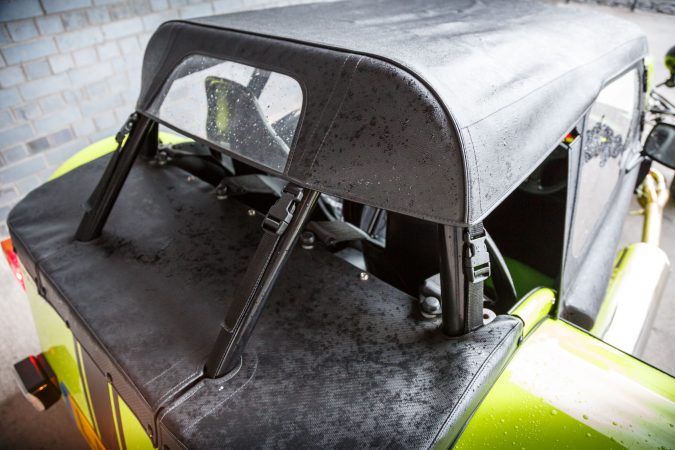 The test car came with two detachable roofs. A full roof and the half roof that you can see here. I liked this cover as it gives you some protection from the sun, wind and rain, but allows air to circulate around the cabin and doesn’t restrict your visibility.
The test car came with two detachable roofs. A full roof and the half roof that you can see here. I liked this cover as it gives you some protection from the sun, wind and rain, but allows air to circulate around the cabin and doesn’t restrict your visibility.
The Experience
There is no other way to describe the Caterham Seven 420R other than truly thrilling. Its performance is exciting and electrifying. From my testing, I can say that this model does not disappoint. Every journey you take in this vehicle will be a memorable one. It will keep you fully aware and excited wherever you take it.
Verdict
At £47,320 for this model, it is a significant outlay for a vehicle with no comforts. But what you are getting is a no-compromise track car with outstanding speed and agility. This is the purest road-going track toy that you can buy. Just having a taste of what a Caterham Seven can do will get you hooked on these cars.
The 420R is a hardcore beast that is perfect for the more developed driver to enjoy. Some people may want a less aggressive car, though, so Caterham offer a range of models: 160, 270, 360, 420 and 620. So the chances are, there is a vehicle available to meet your needs.
Video Highlights
Take a close look at the #Caterham #Seven #420R. Watch it accelerate, listen to how it sounds and learn about its performance. Read more – https://www.motorverso.com/portfolio-items/caterham-seven-420r-2018-review/
Posted by Motor Verso on Friday, August 3, 2018
Specification
Caterham Seven 420R Specs
- Price: £ 47,320 as tested
- Engine: 2.0-litre
- Power: 210bhp
- Torque: 203Nm
- Transmission: 6-Speed Manual RWD
- 0-62mph: 3.8 Seconds
- Top speed: 136mph
- Weight: 560kg
Author: Paul Hadley
The History Of Caterham
To begin narrating the history of Caterham you need to begin with the story of the Lotus Seven – the 420R’s ancestor…
Lotus was founded in 1957 by Colin Chapman, an automotive designer and engineer from Surrey. Chapman and his design team created the Lotus Seven Series 1 – a lightweight, cheap, sports car which was embraced by both automotive enthusiasts and clubman racers for being an unparalleled machine on UK roads.
The Series 1’s driving appeal came from its balance of power and weight. The powertrain was a flyweight 40bhp Ford Side-valve Inline 4 engine and the car weighed only 500kg wet. It was also incredibly cheap costing £399 for the components from Lotus, £100 for the Ford engine, and £27 for the BMC rear axle.
This model evolved over time into the Series 2, 3, and 4, launching in 1960, 1968, and 1970 respectively. With each new model Lotus were upgrading the powertrain, drivetrain and materials to keep up with the constantly advancing sports car market.
Chapman’s mantra of “simplify, then add lightness” is still echoed throughout Caterham’s design philosophy today.
In 1973, Lotus announced they were going to discontinue the Seven, and a Lotus dealer called Caterham Cars, owned by Graham Nearn, purchased the rights to continue manufacturing the car.
Over the following years, Caterham continued to manufacture the Seven, following Chapman’s ideology with every model.
There have been some notable wildcards produced throughout Caterham’s eventful lifetime, such as the track-only SP/300.R, the insane supercharged V8 ‘Levante’, and Caterham’s only conventional convertible – the ‘21’.
Currently, Caterham’s line-up of Seven variants ranges from the 80bhp entry-level car, to the 310bhp track ready 620R. More impressively, every car across the range is produced solely in the UK from start to finish.
Furthermore, Caterham’s Academy programme – a racing school which teaches those with no experience to drive competitively on track – has sold out for the 20th consecutive year, having coached over 1000 drivers since its creation.
Whether it’s through their iconic lightweight sportscars, their trained drivers, or their Formula 1 team which officially closed down four years ago, it cannot be denied that Caterham continues to build on their legacy and leave their mark on the automotive world.
The 420R Passenger Experience
Climbing into the 420R is comparable to what a cosmonaut in the 60s must have felt, securing himself within an early space shuttle. There are no creature comforts here and the driving focus is abundantly clear when sliding into the spartan carbon fibre seat. At no point did I feel claustrophobic in the surprisingly comfortable cabin, and the four-point harness is a reassuring nuisance upon hearing the car startup for the first time.
The side exit exhaust sounds phenomenal as the car explodes into life, never has a 2.0litre Duratec engine sounded so savage. The first revs of the engine is ample warning to the driver, preparing them for the upcoming experience – one of raw adrenaline thrill.
The Caterham’s acceleration is incomparable to any other car I have been in. The car launches forwards from a standstill with minimal wheelspin, firing you back into the bucket seat and pinning you there.
Shifting is fast, and mechanical, and the 420R flies through the gears in seconds, barely giving the driver’s left hand time to rest when accelerating hard.
The optional sports suspension absorbs the various bumps and imperfections of UK A-roads but has no qualms in reminding you every time that this car is built with smooth track tarmac in mind. Lumps and potholes which an average family car would glide over become amateur chiropractor work when hit at speed and so a keen eye is required to avoid them for both the car and your spines sake.
Mind-blowing acceleration is all well and good but eventually, there comes a point where that speed needs to be reduced, fast. The brakes are powerful and bring the car to a stop quickly and efficiently. Despite undoubtedly being track ready there is very little squeal which shows Caterham’s experience in creating a balance of road usability and track capability.
Overall, the 420R is a phenomenal car. One which if you are in a financial position to spend approximately £40,000 on a toy, I would highly recommend – there’s no car quite like it.
Author: Cameron Hill

